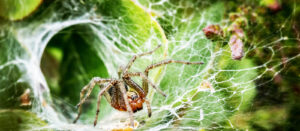It is estimated that between 15,000 and 12,000 years ago, humans began to domesticate plants around the world, which led to the first human settlements and incidentally gave rise to the formation of agricultural societies. It is a salient event in the history of humanity, because many infer that it catapulted the evolution of human culture.
However, some records indicate that thousands of years before plant domestication arose (when humans engaged in hunting and gathering), wild plants were already being harvested in habitats to which nomadic groups cyclically returned. This suggests that long before domestication was under way, there was already full knowledge about the environment and its impact on the life cycle of wild plants.
“This suggests that long before domestication was under way, there was already full knowledge about the environment and its impact on the life cycle of wild plants”.
In fact, it has been argued that the domestication of plants arose within the context of climate change, specifically during the Pleistocene and Holocene, when the planet experienced an increase in CO2 in the atmosphere from 220 to 260 parts per million, an increase in temperature of up to three degrees Celsius, and 30% more in annual precipitation. One hypothesis is that this climate change caused a shortage of wild plants and animals, which in turn may have prompted humans to harvest and therefore select their own food.
Climatic alterations also produced physiological and morphological changes in plants due to the phenomenon of organismic phenotypic plasticity. In this way, when certain plastic characteristics are selected for multiple generations in the presence of changes in the environment, these characteristics are maintained and transmitted through genes and their regulation. But in addition, physiological and morphological changes can modify metabolic aspects and behavioral patterns, which in turn transforms the environment, a process in which the “natural” niche of organisms is constructed.
Both phenotypic plasticity and niche construction are important for understanding the human domestication of plants, since there is a very close link between organisms and the modification of their environment. However, in the case of human beings, more dimensions are incorporated into such “niches” due to the presence of human culture, and all the symbolism that goes with it.
“Both phenotypic plasticity and niche construction are important for understanding the human domestication of plants, since there is a very close link between organisms and the modification of their environment”.
Cultural and symbolic dimensions make human niches very complex and dynamic, allowing information about the environment and the life cycles of plants to be transmitted through traditions and symbols. In this way, specific cultivation conditions are maintained for organisms that grow within the human niche, as well as ecological interactions and growth habits that have historically contributed to the generation of new agricultural resources.
With the passage of time and the manner in which human culture changes, the way in which humans interact with nature has itself come to be changed, or intensified, bringing the environmental problems that now endanger the natural resources that are necessary for survival.
An example of this problem is the phenological changes that have been observed in different species of orchids, in response to climate change and that have caused a decrease in their production. In this sense, it would be pertinent to generate a conceptual change in relation to the way in which humans perceive their interactions with nature, and from this reflection, maintain a sustainable relationship with the environment.
“An example of this problem is the phenological changes that have been observed in different species of orchids, in response to climate change and that have caused a decrease in their production”.
The approach stemming from the sciences of complexity recovers the dynamism and complexity of organism-environment interactions that form part of cultural niches. It integrates multiple disciplines in order to analyse a large amount of data using mathematical models. Moreover, it can contribute to the generation of the comprehensive knowledge that humanity needs to face the complex, pressing challenges that lie in our future.
These types of approaches and tools not only allow us to recover that notion of dynamism and complexity that has been lost over time but could also contribute to generating new agricultural resources to respond to the demand for food, for example by domesticating new species of plants. There may be a more sustainable horizon in integrating the cultural and symbolic dimensions into agricultural science.
Bibliography
Barrera-Redondo, J., Piñero, D., & Eguiarte, L. E. (2020). Genomic, Transcriptomic and Epigenomic Tools to Study the Domestication of Plants and Animals: A Field Guide for Beginners. Frontiers in Genetics, 11(July), 1–24. https://doi.org/10.3389/fgene.2020.00742
Gepts, P., & Papa, R. (2003). Evolution during Domestication. Encyclopedia of Life Sciences, 1–7. https://doi.org/10.1038/npg.els.0003071
Jablonka, E., & Lamb, M. J. (2005). Evolution in four dimensions: genetic, epigenetic, behavioral, and symbolic variation in the history of life. Cambridge, MA: MIT Press.
Liu, H., Feng, C. L., Luo, Y. B., Chen, B. S., Wang, Z. S., & Gu, H. Y. (2010). Potential challenges of climate change to orchid conservation in a Wild Orchid Hotspot in Southwestern China. Botanical Review, 76(2), 174–192. http://doi.org/10.1007/s12229-010-9044-x
Maldonado, C. E., & Gómez Cruz, N. A. (2010). El mundo de las ciencias de la complejidad. (E. U. del Rosario., Ed.). Retrieved from http://editorial.urosario.edu.co
Pigliucci, M., Murren, C. J., & Schlichting, C. D. (2006). Phenotypic plasticity and evolution by genetic assimilation. Journal of Experimental Biology, 209(12), 2362–2367. https://doi.org/10.1242/jeb.02070
Piperno, D. R. (2017). Assessing elements of an extended evolutionary synthesis for plant domestication and agricultural origin research. Proceedings of the National Academy of Sciences of the United States of America, 114(25), 6429–6437. https://doi.org/10.1073/pnas.1703658114
Salamini, F., Özkan, H., Brandolini, A., Schäfer-Pregl, R., & Martin, W. (2002). Genetics and geography of wild cereal domestication in the near east. Nature Reviews Genetics, 3(6), 429–441. https://doi.org/10.1038/nrg817
Schlichting, C. (1986). The Evolution of Phenotypic Plasticity in Plants. Annual Review of Ecology and Systematics, 17(1), 667–693. https://doi.org/10.1146/annurev.ecolsys.17.1.667
Biologist from the Faculty of Sciences at UNAM, currently completing a master’s degree in the area of Neuroecology in the Biological Sciences postgraduate course at the same institution. Interested interested in looking for synchrony between various topics of a philosophical, anthropological, literary, cinematographic, scientific nature, among others. Fan of chess and other sports.
Bióloga de formación por la Facultad de Estudios Superiores Iztacala de la Universidad Nacional Autónoma de México (UNAM). Estudia una maestría en Ciencias Biológicas en la misma universidad. Realiza proyectos de biología molecular en vainilla con un enfoque integral a partir de herramientas bioinformáticas, tecnologías ómicas, biología de sistemas y machine learning. Está interesada en temas relacionados con la domesticación de plantas, evolución biológica y cultural para la generación de recursos agrícolas. Convencida de que la integración de distintos tipos de conocimiento, es la piedra angular para la innovación y resiliencia social.


